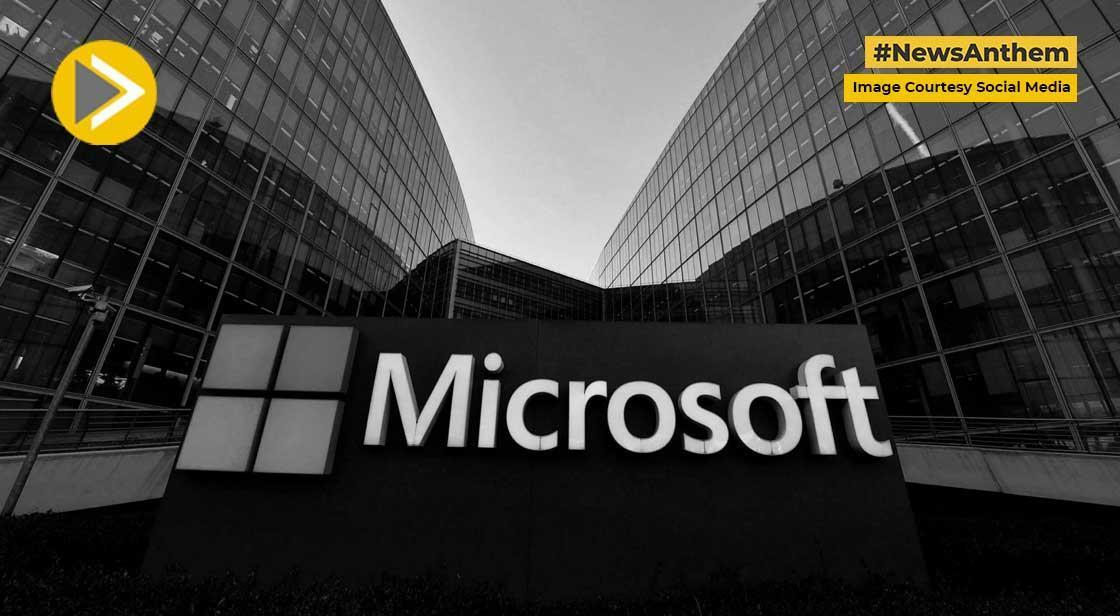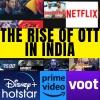Microsoft Launches NLWeb Project to Power AI-Driven Internet

News Synopsis
Microsoft has officially introduced NLWeb (Natural Language Web) at its Build 2025 conference, positioning it as the next major innovation in internet technology.
The project seeks to revolutionize how users interact with websites—by enabling them to ask questions and receive responses in plain language, much like engaging with an AI assistant or Copilot.
What is NLWeb?
“NLWeb is the fastest and easiest way to effectively turn your website into an AI app, allowing users to query the contents of the site by directly using natural language, just like with an AI assistant or Copilot,” Microsoft explained in its newsroom announcement.
Transforming the Web Into a Conversational Space
Chatbots Replacing Search Boxes
With NLWeb, traditional search boxes are expected to make way for AI-driven chatbot interfaces, providing users with a conversational way to find information or take action on a website.
Integration with MCP for AI Agents
Beyond chatbots, NLWeb also enables each website to function as a Model Context Protocol (MCP) server—a universal standard spearheaded by Anthropic. This standard allows AI systems to seamlessly access, understand, and retrieve data from various web sources.
“Ultimately, we believe NLWeb can play a similar role to HTML in the emerging agentic web,” Microsoft said, hinting at a more interactive, AI-friendly internet.
Technology-Agnostic & Developer-Friendly
NLWeb is designed to be compatible with all major operating systems, AI models, and vector databases, making it a versatile and inclusive solution for developers worldwide. This openness ensures broad adoption across platforms and industries.
The Vision Behind NLWeb
The brainchild of RV Guha, Corporate Vice President and Technical Fellow at Microsoft, NLWeb reflects the company’s growing investment in AI-driven technologies. Guha, a noted internet pioneer, joined Microsoft to lead projects that bridge the web with cutting-edge AI frameworks.
A Step Towards the Agentic Web
Microsoft envisions an internet where AI agents can autonomously perform various functions—ranging from customer service and handling returns to negotiating tasks—on behalf of users. NLWeb is a foundational step toward realizing this agentic web.
History of Microsoft
Microsoft Corporation is an American multinational technology company headquartered in Redmond, Washington. It is one of the world's largest and most influential technology companies, known for its software, consumer electronics, personal computers, and related services.
1. Founding and Early Days of Microsoft Corporation (1975-1985):
-
Founders: Microsoft was founded by Bill Gates and Paul Allen on April 4, 1975, in Albuquerque, New Mexico.
-
First Product: Their first product was Altair BASIC, an interpreter for the Altair 8800 microcomputer.
-
MS-DOS (1981): A pivotal moment came when IBM chose Microsoft's 16-bit operating system, MS-DOS 1.0, for its personal computer. This laid the groundwork for Microsoft's dominance in operating systems.
-
Move to Washington: In 1979, Microsoft moved its operations from Albuquerque, New Mexico, to Bellevue, Washington.
2. The Rise of Windows and Office (1985-2000):
-
Windows 1.0 (1985): Microsoft launched its first graphical user interface (GUI) operating system, Windows 1.0, in November 1985.
-
Initial Public Offering (IPO) (1986): Microsoft went public on March 13, 1986.
-
Microsoft Office (1989): The company introduced the earliest version of its Office suite of productivity applications, including Word and Excel.
-
Windows 3.0 (1990): This version significantly improved upon its predecessors and became a major commercial success.
-
Windows 95 (1995): A landmark release that featured a completely new user interface, including the iconic "Start button." It sold over a million copies in the first four days. Microsoft also began its foray into the internet by bundling Internet Explorer with Windows 95.
-
Windows 98 (1998): Another successful iteration of the operating system.
-
Steve Ballmer CEO (2000): Bill Gates stepped down as CEO, and Steve Ballmer was named his successor.
3. Diversification and Challenges Microsoft Corporation (2001-2013):
-
Windows XP (2001): A highly popular and long-lived version of Windows.
-
Xbox (2001): Microsoft entered the video game console market with the launch of the Xbox, diversifying its business beyond software.
-
Windows Vista (2007) & Windows 7 (2009): Vista faced mixed reception, while Windows 7 was widely praised for its improvements.
-
Bing Search Engine (2009): Microsoft launched its search engine, Bing, to compete with Google.
-
Mobile Efforts: Microsoft made various attempts to gain traction in the mobile phone market, notably with Windows Phone 7 (2010), but struggled against iOS and Android.
-
Acquisitions: Key acquisitions during this period included Skype (2011) for $8.5 billion and Nokia's mobile and devices division (2013) for $7.2 billion, though the latter proved unsuccessful.
4. Cloud, AI, and Satya Nadella Era (2014-Present):
-
Satya Nadella CEO (2014): Satya Nadella was appointed CEO in February 2014. His leadership marked a significant shift in Microsoft's strategy, focusing on cloud computing, enterprise services, and a more open approach to software.
-
Cloud Computing (Azure): Microsoft Azure, its cloud computing platform, became a central pillar of the company's growth.
-
Windows 10 (2015): Launched as "Windows as a Service," intended to be the last major numerical release, with continuous updates.
-
Major Acquisitions: Under Nadella, Microsoft made several significant acquisitions:
-
LinkedIn (2016): Acquired for $26.2 billion, integrating a professional networking platform.
-
GitHub (2018): Acquired for $7.5 billion, signaling a stronger commitment to the open-source community.
-
ZeniMax Media (2020): Acquired for $8.1 billion, boosting its Xbox gaming content.
-
Nuance Communications (2021): Acquired for $19.7 billion, focusing on AI in healthcare.
-
Activision Blizzard (2022): Acquired for $68.7 billion (completed in 2023), one of the largest tech acquisitions ever, further strengthening its gaming division.
-
-
Windows 11 (2021): A major update to the Windows operating system.
-
AI Leadership: Microsoft has become a major player in Artificial Intelligence, making significant investments and partnerships (e.g., with OpenAI) to integrate AI across its products and services, from Azure AI to Copilot in Microsoft 365.
-
Market Capitalization (2025): As of May 20, 2025, Microsoft's market capitalization stands at approximately $3.405 trillion, making it one of the most valuable companies globally.
-
Mission Statement: Microsoft's mission is "to empower every person and every organization on the planet to achieve more."
Microsoft's history is a testament to its adaptability, innovation, and ability to evolve with technological shifts, from the PC revolution to the internet, cloud computing, and now the age of AI.
Conclusion: A New Era of the Interactive Internet
With the launch of NLWeb, Microsoft is setting the stage for a radically new internet experience—one where websites are no longer static information pages but intelligent, responsive AI-powered entities.
The combination of natural language processing, chatbot interfaces, and MCP integration suggests a future where users interact with the web more intuitively and efficiently.
NLWeb not only aligns with Microsoft’s AI-first vision but also lays the groundwork for an internet built around agent-based automation and intelligence. As this open project unfolds, it may prove to be as transformative as HTML was in the early days of the web.
You May Like









